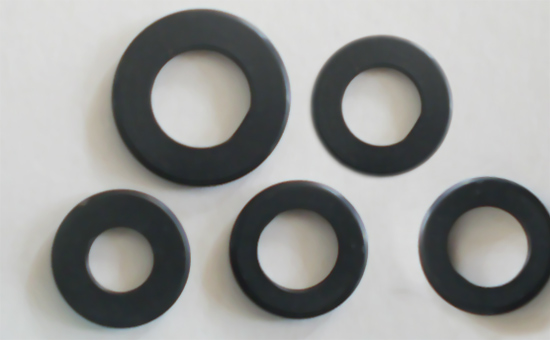
Recently, there have been customer reactions: bubbles are formed after adding phenolic resin to the nitrile seal. Why? It is well known that rubber seals produced by nitrile rubber or nitrile reclaimed rubber have low cost, wide application, excellent oil resistance, heat resistance and corrosion resistance, and are popular in the market; phenolic resin has good compatibility with nitrile rubber and can be improved. The tensile strength, tear strength, hardness, heat resistance, abrasion resistance, flexural resistance and chemical stability of the nitrile vulcanizate are commonly used as a compounding agent in nitrile seals. So what causes the nitrile seal to create bubbles after the addition of the phenolic resin?
First, let's look at how phenolic resin interacts with nitrile rubber/recycled rubber:
The phenolic resin has good compatibility with the nitrile rubber/recycled rubber, especially the high acrylonitrile nitrile rubber. In the nitrile rubber compound, the phenolic resin can be used as a reinforcing agent to improve the tensile strength and hardness of the vulcanized rubber and improve the index. The rubber compound has heat resistance, flex resistance, chemical corrosion resistance and electrical insulation properties; as a plasticizer, it can improve the reinforcing property of the rubber compound; the phenolic resin can also promote the crosslinking reaction of the rubber compound, and play the role of sulfur and accelerator; Therefore, theoretically, the use of an appropriate amount of phenolic resin in the nitrile seal can significantly improve the mechanical properties, compression set, and aging resistance of the seal, improve the sealing effect, and prolong the service life.
Having said that, why do some nitrile seals produce bubbles when adding phenolic resin? In fact, this has a lot to do with the quality of the phenolic resin: usually the phenolic resin used in the nitrile seal expires or the quality of the phenolic resin is unqualified, which will cause bubbles in the nitrile seal; the phenolic resin used is unevenly dispersed, and the resin is not completely in the rubber. Dissolution also causes bubbles in the nitrile rubber/recycled rubber seal; in addition, if the melting point of the phenolic resin used is too high (there are many types of phenolic resins), bubbles may also occur.
From other perspectives, if the activation system of the nitrile rubber/recycled rubber seal is not designed properly or the mixing temperature is too low during mixing, bubbles may appear in the nitrile seal. In the face of the problem of bubbles appearing in the nitrile seals, rubber manufacturers must consider and analyze the reasons from many aspects, and do not easily negate a high-quality compounding agent.
In the actual production process, any failure to do anything can lead to bubbles in the nitrile seal. Therefore, rubber manufacturers must strictly control the quality of raw materials and the production process, such as whether the rubber contains excessive moisture and impurities. Whether the compounding agent is agglomerated, etc., timely cleans and maintains the production equipment, avoids the occurrence of bubbles in the seal due to interference of all raw materials and external factors, and improves the yield and production efficiency of the nitrile seal.
Exclusive original article [commercial authorization] reprint, excerpt and excerpt in any form are prohibited without written authorization. Focus on Hongyun rubber: learn the process formula and raw material technology of producing rubber products from recycled rubber to help you reduce costs and increase profits